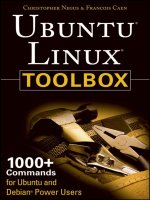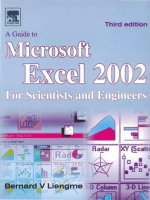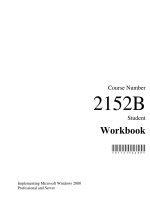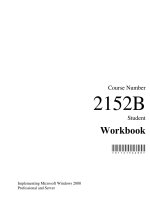Implementing microsoft dynamics 365 for finance and operations
Bạn đang xem bản rút gọn của tài liệu. Xem và tải ngay bản đầy đủ của tài liệu tại đây (35.61 MB, 668 trang )
Implementing Microsoft Dynamics 365 for Finance and Operations
Implement methodology, integration, data migration, and more
This book is based on Enterprise Edition
Rahul Mohta
Yogesh Kasat
JJ Yadav
BIRMINGHAM - MUMBAI
Implementing Microsoft Dynamics 365 for
Finance and Operations
Copyright © 2017 Packt Publishing
All rights reserved. No part of this book may be reproduced, stored in a retrieval system, or
transmitted in any form or by any means, without the prior written permission of the publisher, except
in the case of brief quotations embedded in critical articles or reviews.
Every effort has been made in the preparation of this book to ensure the accuracy of the information
presented. However, the information contained in this book is sold without warranty, either express
or implied. Neither the authors, nor Packt Publishing, and its dealers and distributors will be held
liable for any damages caused or alleged to be caused directly or indirectly by this book.
Packt Publishing has endeavored to provide trademark information about all of the companies and
products mentioned in this book by the appropriate use of capitals. However, Packt Publishing cannot
guarantee the accuracy of this information.
First published: September 2017
Production reference: 1120917
Published by Packt Publishing Ltd.
Livery Place
35 Livery Street
Birmingham
B3 2PB, UK.
ISBN 978-1-78728-333-6
www.packtpub.com
Credits
Authors
Copy Editor
Rahul Mohta
Muktikant Garimella
Yogesh Kasat
JJ Yadav
Reviewers
Nicolae Tarla
Project Coordinator
Madhu Babu Rapolu
Ulhas Kambali
Pankaj Sonawane
Sukrut Parab
Commissioning Editor
Proofreader
Aaron Lazar
Safis Editing
Acquisition Editor
Indexer
Denim Pinto
Francy Puthiry
Content Development Editor
Graphics
Vikas Tiwari
Abhinash Sahu
Technical Editor
Production Coordinator
Subhalaxmi Nadar
Melwyn D'sa
Disclaimer
This book was prepared by each of author's personal capacity. The opinions and recommendations
expressed are the author's own and do not reflect the view of any of the organizations they are
associated with.
About the Authors
Rahul Mohta is a cofounder of Real Dynamics and also works as an independent trainer for
Microsoft. He has 16 years of experience in ERP, focusing on Microsoft Dynamics 365 for Finance
and Operations, Enterprise edition (AX) and has worked for customers and partners worldwide. His
experience spans multiple geographies (America, Europe, and Asia) across various domains, such as
financials, supply chain and distribution, projects, manufacturing, warehousing, retail, and
professional services, where he works as a trusted advisor while undertaking diverse roles across
various implementations and initiatives.
He is an enthusiast of ensuring value creation while embracing Microsoft Dynamics 365 for Finance
and Operations, Enterprise edition (AX), and he regularly shares his knowledge through blogs and
training sessions delivered for Microsoft and other companies.
I would like to thank several people who supported me directly as well as indirectly in my
knowledge on Microsoft Dynamics 365 for Finance and Operations, Enterprise edition (AX) and
for motivating me to write this book. I sincerely thank my parents, coauthors (Yogesh and JJ),
partners in Real Dynamics, mentors, colleagues, and my near and dear ones in my family and
circle of friends.
Yogesh Kasat is a founding partner of Real Dynamics, which is one of the first IV&Vs (Independent
Verification and Validation services provider) for Microsoft Dynamics 365 for Finance and
Operations, Enterprise edition. He has led several large Dynamics AX implementations and turned
them into success stories with his unique blend of knowledge of financial and supply chain modules,
technical architecture, and business process optimization.
Yogesh brings over 15 years of experience in ERP Consulting and Audits to the team. He has worked
as a solution architect and project lead on many enterprise engagements, and as an advisor with the
Microsoft Product team. His global customer experience covers the USA, Canada, UK, Ireland,
Japan, India, and Singapore.
Yogesh is a returning author, and having previously written the book Microsoft Dynamics AX
Implementation Guide.
I would like to thank several people who provided me encouragement and valuable feedback on
the previous. My sincere thanks to customers, colleagues at Real Dynamics, mentors, and peers in
the industry who helped me gain knowledge on Microsoft Dynamics 365 for Finance and
Operations, Enterprise edition (AX). I thank my mom, sisters and brothers, wife and kids, and
friends and family for their continued support while I was writing.
JJ Yadav has been working on Microsoft Dynamics 365 for Finance and Operations, Enterprise
edition for more than 13 years as a solutions architect, project manager, technical lead, and
developer. He started working on Axapta 3.0 as a developer with Euro Info Systems in India (now
Tectura India). He has experience in leading and managing several Dynamics AX Global
implementations and upgrade projects. His core technical expertise includes infrastructure planning,
integration services, data migration, and workflow. He has extensive functional experience in
financials, procurement, accounts payable, accounts receivable, inventory and warehouse
management, and the service modules of Dynamics AX.
Currently, he works as a senior project manager with Hitachi Solutions, America in the central region
of the U.S.
JJ Yadav has also coauthored the book Microsoft Dynamics AX Implementation Guide, published
by Packt.
I would like to thank my family, friends, and coworkers for their support and inspiration, and my
beautiful wife, Khushboo, for supporting and encouraging me at every walk of life and for all her
patience and support during the hours and weekends that I spent writing this book.
My sincere gratitude to my coauthors, Yogesh Kasat and Rahul Mohta, for putting in great
teamwork while writing this book. I would like to thank all the reviewers and Packt for providing
valuable feedback and comments during the creation of this book.
About the Reviewers
Nicolae Tarla is a Microsoft Dynamics 365 specialist with a focus on solution architecture and
technical presales. He has worked on various mid-sized to enterprise-level Dynamics 365, Office
365, and SharePoint implementations for both private and public sectors. He has been awarded the
Business Solutions MVP designation for community contributions across several times.
Nicolae has participated as a technical reviewer and author on several books, presented at several
events and conferences. He blogs at />Nicolae has also worked as a technical reviewer on the books: Microsoft Dynamics 365 Extensions
Cookbook and Microsoft Dynamics CRM 2011: Dashboards Cookbook. Moreover, he has
authored Microsoft Dynamics CRM 2016 Customizations, Microsoft Dynamics CRM
Customization Essentials, and Microsoft Dynamics CRM 2011 Scripting Cookbook by Packt.
I would like to thank the author and publisher for offering me the opportunity to partake in this
review. It was a great experience assisting on this project. In addition, a big thanks goes to the
Dynamics 365 community, for supporting the authors.
Sukrut Parab is senior solutions architect in Dynamics 365 for Operations (AX). He brings 11+
years of technology experience in industry and consulting, exclusively focused on Microsoft
Dynamics AX development and related technologies (.NET ,SQL). He has been part of the successful
upgrade from Ax 2012 RU 7 to Dynamics 365 for Operations. He has been working on Dynamics AX
since Axapta 3.0 and has extensive experience in solution architecture, design, development,
integration, data migration, and version upgrade for Microsoft Dynamics AX ERP. He has
successfully worked with global teams to implement ERP systems in a variety of industries (finance,
trade and logistics, entertainment, retail, and so on). He has also worked extensively on various
Microsoft Dynamics AX modules, such as accounts payable, accounts receivable, inventory, product
information management, general ledger, expense management, and HR. Sukrut has a bachelor's
degree in electronics and telecommunication engineering and is a Microsoft Certified Technology
Specialist (MCTS), Dynamics AX.
Madhu Babu Rapolu has 17 years of industry experience, with over 11 years of experience working
on the various versions of Microsoft Dynamics 365 for Finance and Operations, Enterprise edition.
He has extensive functional experience in the trade and logistics, financials, project management and
accounting, and production modules of Microsoft Dynamics AX. He has played versatile roles during
his tenure as a business analyst, functional lead, and project manager. He is currently working as a
solution architect in the central region of the USA.
Pankaj Sonawane is an accomplished, dedicated, and result-oriented Microsoft Certified Dynamics
365 Consultant. He is a highly motivated Dynamics AX professional with solid track records in AX
consulting, solution designs, and the development and delivery of AX projects. He has been working
for more than 13 years in the AX space, with strong analytical and problem-solving skills, from
Axapta 3.0 to the latest Dynamics 365 for Finance and Operations, Enterprise edition. During his
career, he has played various roles in some of the world’s largest Dynamics AX implementations and
upgrade projects, ranging from senior developer and technical consultant to technical architect, team
lead, and AX manager. He has been continuously working in the Microsoft technology stack using
MorphX, X++, SQL, C#, ASP.Net, BizTalk, AIF, SSRS, SSAS, data warehousing, Power BI, Visual
Studio, and so on. He is also proficient in different AX-functional areas such as trade and logistics,
AR, AP, inventory, general ledger, and human resource. He is also skilled in developing user
documentation, requirements specifications, technical documentation, and architectural designs. He is
the most sought-after ERP expert with an in-depth knowledge of AX as a product.
Recently, Pankaj has successfully completed an upgrade from Dynamics AX 2012 to Dynamics 365
for Finance and Operations, Enterprise edition and has continued working on the same to integrate
Dynamics 365 with various SaaS systems.
www.PacktPub.com
For support files and downloads related to your book, please visit www.PacktPub.com. Did you know that
Packt offers eBook versions of every book published, with PDF and ePub files available? You can
upgrade to the eBook version at www.PacktPub.com and as a print book customer, you are entitled to a
discount on the eBook copy. Get in touch with us at for more details.
At www.PacktPub.com, you can also read a collection of free technical articles, sign up for a range of free
newsletters and receive exclusive discounts and offers on Packt books and eBooks.
/>
Get the most in-demand software skills with Mapt. Mapt gives you full access to all Packt books and
video courses, as well as industry-leading tools to help you plan your personal development and
advance your career.
Why subscribe?
Fully searchable across every book published by Packt
Copy and paste, print, and bookmark content
On demand and accessible via a web browser
Customer Feedback
Thanks for purchasing this Packt book. At Packt, quality is at the heart of our editorial process. To
help us improve, please leave us an honest review on this book's Amazon page at
/dp/178728333X.
If you'd like to join our team of regular reviewers, you can e-mail us at We
award our regular reviewers with free eBooks and videos in exchange for their valuable feedback.
Help us be relentless in improving our products!
Table of Contents
Preface
What this book covers
What you need for this book
Who this book is for
Conventions
Reader feedback
Customer support
Downloading the example code
Downloading the color images of this book
Errata
Piracy
Questions
1.
Introduction to Microsoft Dynamics 365
What is Microsoft Dynamics 365?
The benefits of Microsoft Dynamics 365
Microsoft Dynamics 365 salient features
Microsoft Dynamics 365 apps
Microsoft Dynamics 365 for Sales
Microsoft Dynamics 365 for Customer Service
Microsoft Dynamics 365 for Field Service
Microsoft Dynamics 365 for Project Service Automation
Microsoft Dynamics 365 for Finance and Operations, Enterprise edition (AX)
Microsoft Dynamics 365 for Finance and Operations, Business edition (NAV)
Microsoft Dynamics 365 for Retail
Microsoft Dynamics 365 for Talent
Human resources
Attract
Onboard
Microsoft Dynamics 365 for Marketing
Microsoft Dynamics 365 for Customer insights
Complimenting/supporting tools with Microsoft Dynamics 365
Power BI
PowerApps
Microsoft Flow
Common Data Service (CDS)
Microsoft AppSource
Dynamics 365 for Finance and Operations, Enterprise edition (AX)
What is Dynamics 365 for Finance and Operations, Enterprise edition?
History of Dynamics 365 for Finance and Operations
Highlights of Dynamics 365 for Finance and Operations
Trial of Microsoft Dynamics 365
Buying Microsoft Dynamics 365
Summary
2.
Implementation Methodology and Tools
Why select a methodology?
Methodologies relevant for embracing Dynamics 365
The Conference Room Pilot (CRP) methodology
Planning
Execution
Best practices in using CRP
An example of a CRP methodology
The agile methodology
The waterfall methodology
Comparative summary
Lifecycle Services (LCS) -- implementation tools
Foundation
Methodologies
Projects
Project users
Organization users
SharePoint online library
Preview feature management
Shared asset library
Subscription estimator
Asset library
Ongoing
Business process modeler
Cloud-hosted environments
Code upgrade
Configuration and data manager
Localization and translation
Support
Issue search
Support
Work items
System diagnostics
Updates
Resources
Summary
3.
Architecture and Deployment
Architecture
Conceptual architecture
Deployment architecture
The cloud deployment architecture
The on-premise deployment architecture
Application components and architecture
Identity
Data layer
Platform
Application
Client
Browser client
Mobile app
Office 365
Lifecycle Services
Development architecture
Integration architecture
Security architecture
Deployment options
Cloud
Cloud and Edge or hybrid deployment
Local business data or on-premises
Comparing deployment options
Summary
4.
Project Initiation and Kickoff
The need for a strong project start
Project team composition
The backbone of a project
Project charter
Project plan
FastTrack for Dynamics 365
Ground rules for day-to-day operations
Kickoff meeting
Project initiation and LCS
SharePoint online
Project deliverables in the CRP methodology
The planning phase
The business requirement definition phase
The solution analysis phase
The solution design phase
The configure/preview/prototype phase
The development phase
The testing and acceptance phase
The training phase
The Go Live phase
The support phase
Best practices in project initiation
Summary
5.
Requirements, Business Process Analysis, and Traceability
Requirements scoping
Hierarchy of business processes and subprocesses
Business goals
Business process
Sub-processes
Requirements
LCS Business process modeler and VSTS
Business process modeler
Visual Studio Team Services (VSTS)
BPM and VSTS sync
Continuous reporting and VSTS
Requirement gathering techniques
Listen
Lead
Negotiate
Requirements Traceability Matrix (RTM)
Requirement segmentation and ownership
Analysis of requirements
Solution blueprint
Key decision log
Best practices in managing requirements
Summary
6.
Configuration and Data Management
Strategies for managing configuration and data migration
Configuration management
Configuration planning
The golden configuration environment
Data migration management
Scoping
Common data migration areas
Planning
Execution
Data management tools
The data management framework
Data management concepts
The data management workspace
Data entities
Configuration data templates
Default data templates
Configuration data project
Data packages
LCS Project | Asset library | Data packages
Configuration data packages
LCS -- configuration and data manager
Process data packages
How these concepts come together
Database operations
Cross-company data sharing
Data management scenarios
Initial configuration in a blank environment
Data migration from legacy systems
Copy the company configuration within an existing environment
Copy data between environments
Ad hoc data loading
Best practices in managing configurations and data migration
Summary
7.
Functional and Technical Design
Finding the right app for your business needs
Before choosing ISV solutions
After selecting the partner
Common pitfalls
Common features
Personalization
Office integration
Document management
Workspaces
Electronic reporting
Tax engine
Batch framework
Workflows
Database logging
Mobile application
Common Data Services, Microsoft Flow, and PowerApps
The functional design document
The fit-gap review session
Why write FDD?
Project management aspects of design
Things to know before writing an FDD
Feasibility analysis
Dos and don'ts
The solution design document
Overview and objectives
Guidelines for solution design documents
The technical design document
Overview and objectives
Guidelines for the technical design document
Preparation
Execution
Outcome
Summary
8.
Integration Planning and Design
Integration architecture
Basic integration concepts
RESTful APIs
SOAP
SOAP versus REST
JSON
OData
OAuth
Integration concepts in Dynamics 365 for Finance and Operations, Enterprise edition
Data entities
What is a data entity?
OData services
Querying or browsing an OData endpoint
Consuming OData services
Client application registration and setup
Creating a project, adding libraries, and generating an OData service proxy
Authentication and OData service call
Custom services
Recurring integrations
Integration tools, midleware, and scenarios
Dynamics 365 data integrator
Integration architecture
Setting up data integration
Connections
Connection sets
Integration keys
Projects
Schedules
Integrating and monitoring
Benefits of CDS data integration
Scenarios focus
Integration planning
Integration scenarios
Integration requirements
Synchronous or asynchronous
Integration design and development
Developing a high-level conceptual design
Selecting the right integration technology
Defining field mapping
Developing, configuring, and testing
Best practices and recommendations
Summary
9.
Building Customizations
Architecture and concepts
Programming language
Compile exclusively in .NET CIL
Language enhancements
Unit of compilation
Compiler and tooling
Integrated development environment (IDE)
Development IDE in Dynamics 365 for Finance and Operations, Enterprise edition
Development IDE in Dynamics AX 2012
Development environment architecture
Programming concepts
Layer system
Models
Packages
Packages and models on the disk
Models and packages in Visual Studio
Overlayering
Extensions
Model sealing and roadmap
Development environment
The version control
Branching strategies
The development machines
Cloud development environment
Local development environment
Application explorer
Application explorer views
Filtering application explorer
Working with elements
Tools addins for Visual Studio
Creating a new model to start customization
Extension capabilities
Project
Create a new project
Adding new or existing element in the project
Import/export project
Development planning
Be agile
Establishing the code review process
Development process
Conceptualization
Create or extends data model
Create or extends business logic
Create or extend user interface
Navigation concepts
Form patterns
User interface extensibility
Control extensibility
Reporting and analytics
SQL server reporting services
Power BI
Security
Security for custom objects
Auther unit tests
Learn and improve
Build and continuous updates
Automated build
Continuous updates
Guidelines and best practices
Summary
10.
Analytics, Business Intelligence, and Reporting
Information insights in Dynamics 365 for Finance and Operations, Enterprise edition
Platform enablement for analytics
Excel
Power BI
Power BI choices
Pricing
Data refresh
Collaboration
Cortana Intelligence Suite
Data insights leveraging Azure
Modern reports and SSRS
Electronic reporting
Mobile platform
Offline and mobile apps
Financial reporting / management reporter
Best practices in analytics and information insights
Summary
11.
Testing and Training
Importance of testing
Types of testing
Feature testing
Testing of custom developed features
Testing of standard and ISV solution features
System integration testing
Process/system testing
Data migration testing
Integration testing
Performance/load testing
User acceptance testing
End-to-end testing
Automated testing strategies
Test automation features in Finance and Operations
SysTest framework
Task recorder-based (coded UI) testing
PerfSDK
Integrating test with build process
Test planning guidelines and recommendations
Test planning and scenarios
The UAT planning and execution
Planning
UAT kickoff
Execution
Sign-off
End-to-end test planning and execution
Execution and real-life examples
Training
The training and help system in Finance and Operations
Modern clients and navigation concepts
In-product help
The business process modeler
The task recorder and task guides
Documentation website
Planning and executing training
Training plan
Training preparation
The training environment
Change management
Summary
12.
Go Live
Production environment and responsibilities
Cloud deployment
Local business data
Cloud and Edge deployment
Go Live activities
The organization's readiness to Go Live
Sign offs
The decision to Go Live
Business contingency planning
Go Live planning and execution
Planning
Executing a release
The importance of communication
Summary
13.
Post Go Live Support
Resources for support
Support tools and LCS
Issue/support lifecycle
Issue discovered/encountered
Issue tracking
Root cause analysis
Escalation to Microsoft
Production environment support with Microsoft
Support analytics using monitoring and diagnostics
Monitoring
Diagnostics
Analytics
Best practices in post Go Live/support
Summary
14.
Update, Upgrade, and Migration
Understanding update, upgrade, and migration
Updating to the latest Dynamics 365 for Finance and Operation version
Updates to the latest platform
Updates to the latest application
Upgrading your code
Upgrading your data
Updates to a specific application hotfix
Upgrading/migrating from Dynamics AX 2012 or AX 2009
When to upgrade or migrate
Upgrading/migration planning









